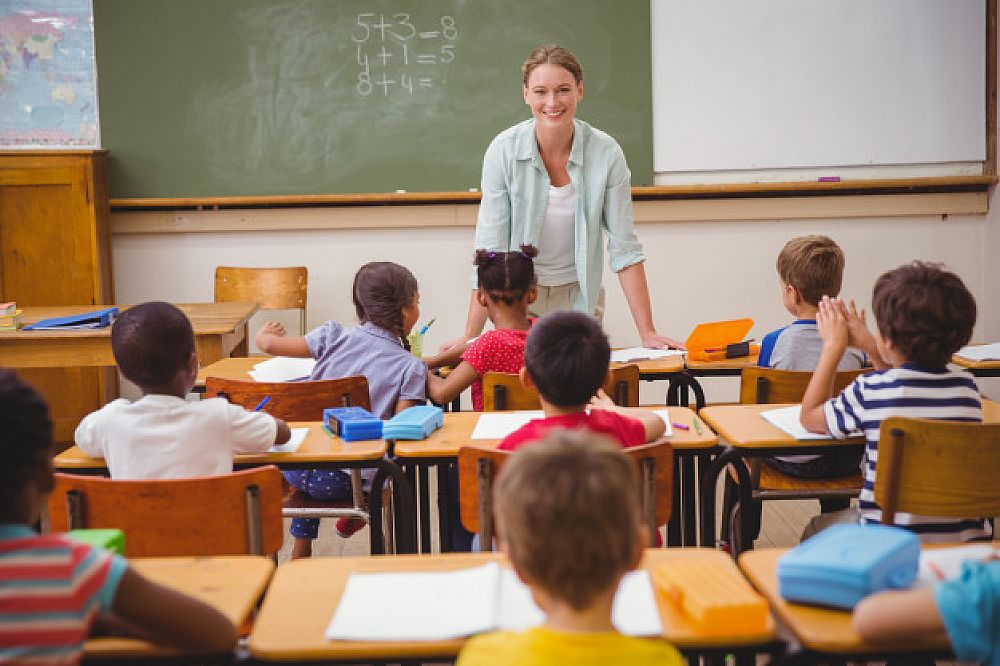Exploring the Different Teaching Approaches in Primary Scientific Research Education Today
The landscape of key science education and learning is evolving, with numerous training approaches gaining prestige in contemporary classrooms. Inquiry-based understanding, hands-on experiments, and the integration of technology are redefining how instructors involve young minds. Furthermore, collaborative techniques and separated direction are being used to deal with the diverse needs of trainees, improving both engagement and understanding. As we check out these techniques, questions develop about their performance and the implications for future educational methods. What might these shifts in technique mean for the following generation of students?
Inquiry-Based Discovering
Inquiry-Based Discovering (IBL) is a pedagogical approach that motivates students to check out scientific concepts with wondering about, investigation, and hands-on testing. This technique highlights the role of students as energetic individuals in their learning, promoting important reasoning and analytical skills. By involving with real-world inquiries, pupils come to be curious and determined, which enhances their understanding of scientific concepts.
In IBL, teachers serve as facilitators, assisting students as they navigate their queries as opposed to supplying details directly. This student-centered method allows for distinction, suiting various learning designs and speeds. Students create abilities in formulating theories, making experiments, and assessing data, which are vital for clinical literacy.
In addition, IBL cultivates partnership amongst students, motivating them to share findings and ideas. This collective inquiry promotes social skills and a feeling of community within the class. The process of query encourages strength, as trainees find out to accept failure as a stepping stone towards understanding.
Hands-On Experiments
Hands-on experiments are an important element of reliable scientific research education and learning, complementing the principles of inquiry-based discovering. These experiments allow trainees to engage directly with scientific concepts, promoting a deeper understanding through experiential understanding. By manipulating products and observing results, young learners can grasp abstract concepts in concrete means.
Such activities promote critical reasoning and analytical skills, as students assume results, conduct experiments, and analyze results. This process motivates them to ask concerns, fine-tune their understanding, and establish a scientific mindset. Hands-on experiments can be tailored to varied understanding styles, making certain that all students have the chance to involve meaningfully with the content.
Moreover, hands-on experiments usually motivate collaboration among peers, advertising teamwork and communication abilities. Working in teams allows trainees to share ideas, go over findings, and pick up from each other, which boosts their total instructional experience.
Incorporating hands-on experiments into the primary science curriculum not just improves the discovering environment however additionally cultivates a lifelong interest in scientific research. By actively getting involved in their education, pupils are most likely to establish an enthusiasm for scientific questions that extends past the class.

Innovation Combination
Integrating modern technology into key science education and learning has ended up being significantly essential in promoting student interaction and improving finding out outcomes. Using digital tools, such as interactive simulations, online labs, and instructional software application, supplies trainees with possibilities to check out scientific concepts in cutting-edge methods. These resources help with a deeper understanding of complex topics by allowing learners to picture and manipulate variables that would certainly be unwise in a standard classroom setup.
In addition, modern technology integration encourages see here customized finding out experiences. Pupils can proceed at their very own speed, revisiting difficult principles via multimedia sources, which satisfy various discovering styles. This adaptability not only supports individual growth but additionally cultivates a sense of autonomy in students.
Additionally, technology offers as a bridge to real-world scientific research, attaching trainees with existing study and expert payments. Access to scientific journals and on-line data sources expands pupils' perspectives on clinical inquiry and cultivates vital assuming skills.
Collaborative Understanding
Joint understanding plays an essential function in primary scientific research education and learning by fostering synergy and communication abilities amongst students. This technique urges learners to collaborate, share expertise, and involve in analytic, which boosts their understanding of clinical principles. By taking part in index group tasks, pupils find out to verbalize their ideas, listen to varied viewpoints, and work out services, every one of which are vital abilities in both scholastic and real-world contexts.
Research study indicates that joint knowing can lead to raised motivation and involvement in science topics, as trainees find pleasure in common experiences (primary science tuition Singapore). Furthermore, this approach prepares pupils for future collective undertakings, furnishing them with the abilities required for reliable team effort in college and expert settings. Ultimately, accepting joint understanding in primary scientific research education can significantly improve the learning experience and advertise a much deeper understanding of clinical query
Set Apart Direction

Set apart instruction can manifest in various ways, such as varying the content, processes, or products of discovering. Teachers might make use of tiered jobs that offer varying degrees of complexity, permitting pupils to work at their corresponding preparedness degrees. Additionally, flexible organizing approaches can help with collaboration among students with various abilities, cultivating peer understanding.
Analysis plays an essential duty in this approach, as it educates guideline and assists instructors comprehend each trainee's special needs. Developmental assessments, such as tests and observations, can guide instructors in adjusting their approaches to improve discovering results. primary science tuition Singapore. Ultimately, by applying distinguished direction in primary science education and learning, teachers can grow a much more effective and equitable knowing environment, encouraging all trainees to reach their full capacity in recognizing scientific sensations
Verdict
In summary, the diverse mentor approaches in key science education and learning, including inquiry-based learning, hands-on experiments, modern technology assimilation, collaborative knowing, and differentiated direction, collectively contribute to a much more reliable discovering setting. These methods advertise crucial reasoning, analytical abilities, and a deeper comprehension of scientific principles. By implementing these techniques, teachers can produce interesting and encouraging class that deal with the different needs of pupils, inevitably cultivating a lifelong passion in science and boosting scholastic achievement.
Inquiry-Based Discovering (IBL) is an instructional method that urges students to check out scientific concepts via wondering about, examination, and hands-on testing.Joint knowing plays a crucial role in main science education and learning by fostering team effort and communication skills amongst trainees.Research suggests that collective knowing can lead to increased inspiration and involvement in scientific research topics, as pupils discover satisfaction in common experiences.In cultivating a comprehensive understanding setting, set apart guideline emerges as a key approach to accommodate the diverse demands and capacities of pupils in key science education. Ultimately, by carrying out set apart instruction in key scientific research education, instructors can cultivate an extra reliable and fair knowing setting, encouraging all pupils to reach their full potential in recognizing scientific phenomena.